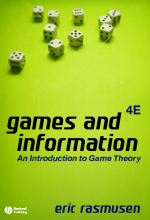Summary: Organisational Theory And Dynamics
- This + 400k other summaries
- A unique study and practice tool
- Never study anything twice again
- Get the grades you hope for
- 100% sure, 100% understanding
Read the summary and the most important questions on Organisational theory and dynamics
-
1 Organization theory and its multiple perspectives
This is a preview. There are 13 more flashcards available for chapter 1
Show more cards here -
What is the definition of a theory?
A field of study for example organization theory.
A theory can also refer to a particular idea that is part of a field of study. Theory is constructed from concepts and relationships between conepts that explain, understand or appreciate the phenomenon of interest. -
What is the difference between adages (gezegdes) and theories?
Adages contain wisdom that has been past down through anecdotal experience.
A theory is formalized knowledge that has created with considerations to philosophy and science -
What is a concept?
A concept is a building block of theory and provides mental storage units that can organize and hold ideas.
Cocepts allow you to communicate and exchange information -
Explain the use of higher-order concepts within knowledge structures
Knowledge structures grow as higher order concepts are developed.
Higher order concepts are developed by additional repetitions of the abstraction processes because each repetition raises the concept to a higher level.
However, each repetition also decreases the details applicable to specific examples of the concept -
What is the phenomenon of interest?
This is the FOCUS and SUBJECT of a theory and what the theorist is aiming to explain, understand or appreciate. Theorists limit phenomena that they study to phenomenon within an established domain in their field.
A completely new phenomenon in a field or a new way of viewing an existing phenomenon can produce a revolutionary theory. -
What is a theoretical perspective?
This is created when a group of theorists working within a field of study define their concepts in a similar way and use this shared idea to theorize their phenomena of interest.
Although theorizing is carried out by researching and their focus of study, external elements such as conversations among theorists will influence the theorization.
Groups that have shared habits of thought may diverge to the extent that there are noticeable boundaries between different groups -
What is a paradigm?
A paradigm is a worldview that is firmly rooted in the minds and actions of people to the extent that they do not consider alternatives. -
Name a similarity and difference between paradigms and perspectives
Perspectives and paradigms both set expectations for the research process but organizational theorists disagree on their preference for a certain perspective or paradigm. -
Name 4 disadvantages of the quantitative methods that modernists use to study organizations
1) The social structure of organizations may not suit mathematical analysis
2) The data used often not exact
3) Organizational behavior varies and hence there is high measurement error
4) Researchers may confuse correlation with causality because the correlational statistics are not enough to support causal inference. The fact that two factors are related does not mean that they have a causal relationship -
Why is the consideration of epistemology important for theorists?
Theorists make epistemological assumptions whenever they conceptualize or theorize
- Higher grades + faster learning
- Never study anything twice
- 100% sure, 100% understanding
Topics related to Summary: Organisational Theory And Dynamics
-
Organization theory and its multiple perspectives
-
A brief history of organizational theory
-
Organization-environment relations
-
Organizational social structure
-
Organizational technology
-
Power in and around organizations
-
Images of change management
-
Why do organisations change?
-
Changes in organisations
-
Change diagnosis
-
Resistance to change
-
Organisational development and sense-making approaches
-
Change management, Processual and Contingency approaches
-
Vision and the direction of change






























